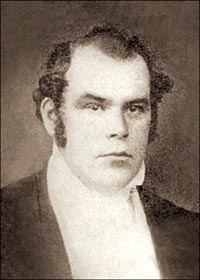
Mormon Classics | "Rigdon Revealed" | Spalding Library | Bookshelf | Newspapers | History Vault
Parley P. Pratt:
Traveling Tin Smith?
By Dale R. Broadhurst
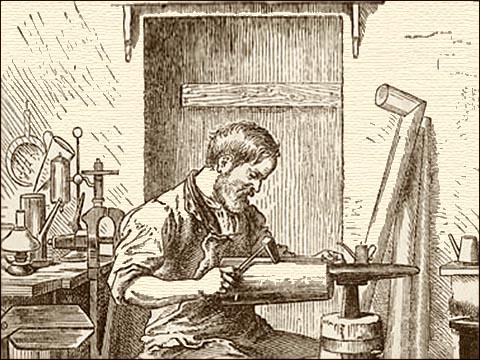
Detail from an Engraving of a Nineteenth Century Tin Smith in His Work Shop
The unOfficial Joseph Smith Memorial Page | Sidney Rigdon: Creating the Book of Mormon
Tracking Book of Mormon Authorship | Word-print Study | Joseph Smith & Sidney Rigdon
Joseph Smith: 19th Century Con Man? | 1874 Parley P. Pratt Autobiography
|
FOR THIS WEB-PAPER ________
|
|
INTRODUCTION
In an autobiographical sketch published in 1858, shortly after his death, Parley Parker Pratt said: "I am the third son
of Jared Pratt and Charity Dickinson, of Columbia county, New York. I was born April 12, 1807, in Burlington, Otsego co.,
New York. Of my childhood and youth I will say but little. I was raised to hard work on a farm, brought up in the strictest
morals, was a believer in the Bible and Jesus Christ, received but a limited education in the common schools."
and --
In the 1874 autobiography Parley at least says a few things about his experiences before marrying in 1827. Those few disclosures will have to suffice, for the report which follows -- for they contain all that is known about the man's life between the years 1822 and 1827. And it is the re-creation of that period of Pratt's life which may tell us something important about his role in Mormon origins. |

~ SECTION 1 ~ The Accusation Parley P. Pratt's association with Mormonism is a well known fact. Most biographical sketches of the man skip almost immediately to the year 1830, when Pratt ostensibly encountered the Book of Mormon for the first time. His alleged experiences in that connection were published to the world by the LDS Church in the summer of 1843:
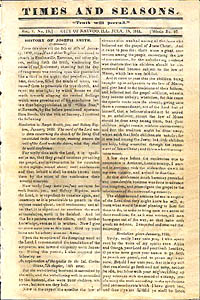
Five years earlier Elder Pratt had made much the same announcement, in his own words, as published in the pages of an obscure Mormon pamphlet:
According to these two early sources, it was "in August, 1830" that Pratt first encountered Mormonism -- quite by accident --
while "on a mission" as "a preacher," or while on "a journey... partly for the purpose of ministering the word." If there
were no contradiction to Elder Pratt's account, all investigation of his early experiences might be abruptly ended at
this point. However, there are indeed some contradictory explanations worth our looking into.
Now, either Mr. Pratt has not told the truth, or Rev. Williams is greatly mistaken -- both narrators of Pratt's purported early history cannot be right. So, which writer is the modern student of Mormonism to believe? Pratt, who says that he happened upon Mormonism by accident in 1830? -- or Williams, who says that as early as 1827 Parley P. Pratt was playing a clandestine role in communicating between Sidney Rigdon and Joseph Smith? If Williams is to be given any credit, then Pratt's pre-1830 history includes a hidden episode, in which he assisted Rigdon and Smith in bringing forth Mormonism.  Rev. Samuel Williams (1802-1887)
It is entirely understandable that Elder Pratt would wish to avoid any discussion of his participation in an 1820s
plan to bring forth a Book of Mormon which was not written by ancient Nephites and which was not
"translated" from their preserved writings upon golden plates. But was this truly the case? After all, Rev. Williams
simply makes an undocumented assertion based upon undisclosed sources. Since Rev. Williams occupied the same pastorate
in Pittsburgh that Sidney Rigdon vacated in 1823, it seems likely that Williams' source was some relative or associate
of Rigdon's, who professed to have access to Rigdon's personal secrets. However, the 1842 reporter's failure to
identify his information source renders his assertion suspect. About all that might immediately be said in its favor
is that the probable Mormon rebuttal (from the 1843 Times and Seasons, as quoted previously), is an equally
unproven assertion.
Rev. Young's explanation of things adds a few more details to the 1842 Williams' report: (1) "Smith and Rigdon,
were intimately acquainted and often met, (perhaps even before any acquaintance with Pratt); (2) Pratt was their
"mutual friend" and "a traveling tinker;" and, (3) Pratt "plied his trade vibrating between Palmyra, N. Y.,
where Smith lived, and Mentor, O., where Rigdon lived." The revisionist history here presented by Rev. Young is
tied up with at least one claim to which Parley P. Pratt would have agreed -- that in the late 1820s he "greatly
admired" Sidney Rigdon and was either a member of Rigdon's Mentor church, or "was frequently in his congregation."
Oddly enough, the Reorganized LDS journalist made no attempt to counter the identification of young Pratt as a "traveling tinker." Given the fact that Pratt could not easily have hidden such a specialized vocation, the modern reader can well wonder why the claim was allowed to pass unchallenged in an official Latter Day Saint publication? Was it so close to the truth that Pratt's defenders did not wish to call additional attention to the issue? If Parley P. Pratt did not act as a human connection between Rigdon and Smith, in the guise of a "traveling tinker," did he perform that same clandestine task while working in some similar vocation? |

~ SECTION 2 ~ The Lost Vocation As already discussed, the charge was made as early as 1842, that Parley P. Pratt acted as a secret go-between among proto-Mormons such as Joseph Smith, Sidney Rigdon and Oliver Cowdery. The notion that Pratt had training as a journeyman tinsmith appears to be unreasonable, however. If young Parley did indeed play such a role, no evidence has survived placing him among the ranks of the "traveling tinkers." With that fact in mind, it may still be useful to investigate what other critics have said about Pratt's pre-Mormon career. Accompanying the previously cited passage from Rev. T. W. Young's 1900 book, we find this special reference:
Since Rev. Young has obviously made use of Mrs. Eaton's historical writings, it may be useful to reproduce her exact words on the subject of Parley P. Pratt and the Book of Mormon:
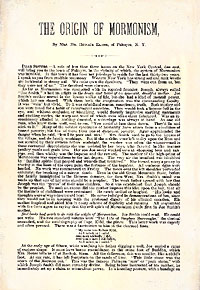
Much of Mrs. Eaton's account of Mormon origins is filled with words like "generally believed" and "perhaps," but
her assertion regarding Elder Pratt is clear-cut and emphatic: "There was a ubiquitous tin peddler in those days
by the name of Parley P. Pratt. He knew everybody in Western New York and Northern Ohio." Here we see the origin
of Rev. Young's later mis-identification of Pratt as a "traveling tinker." While a tin smith was a
specialized trade requiring years of training, practically anybody in those days could have worked occasionally
as a tin peddler. The distinction between the two occupation was also sometimes blurred by peddlers who
took orders for custom tin-smithing, or who made minor repairs on broken tin ware themselves. While young Pratt
almost certainly was not a tin smith (tinker), he very well could have been a tin peddler.
As mentioned before -- it seems likely that Williams' source was some relative or associate of Rigdon's, who
professed to have access to Rigdon's personal secrets. By 1878 Rev. Williams was communicating with "Rigdon's
nephews," and it may have been from this family that Williams heard of the "tin pedlar" story, many years earlier.
It is possible that the 1878 identification of Pratt passed from Williams to Cobb and from Cobb to Eaton, via Major Gilbert (who lived near her in Palmyra). If a pre-1878 identification of Pratt as being a wandering tin peddler could be located, it might be reasonably argued that Mrs. Eaton discovered this claim about Parley P. Pratt independently, perhaps among old traditions preserved in the Palmyra area. Until such verification can be established, the earliest known source for the "peddler" assertion remains the Rev. Samuel Williams. 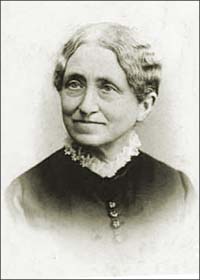 Mrs. Horace Eaton in 1885 As a side note, it might be relevant for the reader to recall that two very early newspaper accounts identify Oliver Cowdery as having been a peddler -- and, for that matter, that the evidently seasoned long-distance walkers (Cowdery and Pratt) peddled copies of the Book of Mormon along the way, while hiking together on their long journey to Missouri during the winter of 1830-31. Pratt in the Year 1826
Before our investigation of Parley P. Pratt's alleged pre-Mormon peddling can effectively continue, some idea
of its place in Pratt's known chronology must be determined.
In the above tabulation the first two entries for the year 1826 are punctuated with question marks. Although Parley
provides the season for his move to the Palmyra area as "Spring," he gives no definite date. If "Spring" is
determined by an increase in temperature and a decrease in snowfall, its relative date might be any time during
the first part of a calender year. So, from Parley's own indefinite recollection (if it can be trusted at all) he
was near Palmyra, New York, early in the year 1826. This, at least, provides a starting point for our investigation
of the claims made by Palmyra resident, Mrs. Eaton, that "in those days" (prior to any public mention of a "Golden
Bible) there was in the area a "tin peddler" named Parley P. Pratt.
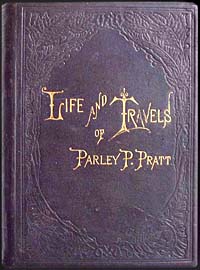
At some unspecified date, near the time that the Spring of 1826 "came again," Pratt says he departed Oswego County,
New York and traveled to Wayne Co., New York. This county had been established in 1823, primarily from Ontario County
-- the home of the Joseph Smith, Sr. family. In other words, for most of 1826 Pratt admits having lived within walking
distance of his future religious leader, the soon-to-be Mormon prophet. On the other hand, young Joe Smith's
whereabouts for most of 1826 are unaccounted for, so nobody can say for certain how near (or how far) these two
future LDS dignitaries were to each other throughout that time period. At the very least, Pratt's self-admitted
presence near Palmyra strengthens Mrs. Eaton's claim that he was known in that region of the country as a peddler.
Under Construction Under Construction
Under Construction |

~ SECTION 3 ~ Under Construction Under Construction
Under Construction 
Under Construction |
|
Under Construction
Under Construction Under Construction 
Under Construction |
rev. 0: Aug. 5, 2009
OPENING NEW HORIZONS IN MORMON HISTORY
